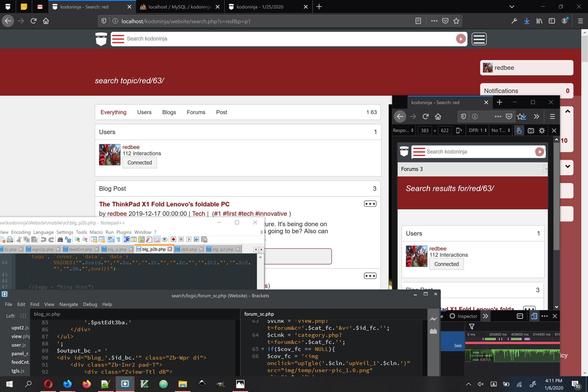#EnclaveGames #MonthlyReport for June? We’ve published the @js13kGames 2024 t-shirts gallery last month, and started the countdown to #js13k 2025.
#HTML5
Simultaneous Translation in HTML
https://shkspr.mobi/blog/2022/07/simultaneous-translation-in-html/
How do you show two languages simultaneously in HTML? If you want to show text in a foreign language, the markup is simple:
<html lang="en-GB">...As Caesar said: <i lang="la">veni vidi vici</i>That says the page is in British English (en-GB) but the specific phrase is in Latin (la). But how can you offer an in-text translation of that phrase into the page's native language?
Here are a few options - and their drawbacks.
Title Text
<i lang="la" title="I came, I saw, I conquered">veni vidi vici</i>veni vidi vici
The user has to hover their pointer over the text and a pop-up will appear with the translation. There are two disadvantages to this:
- Not all devices - like mobile browsers - support title text.
- The title text has no separate language attribute - so is semantically in Latin.
The language can be corrected by wrapping the title in a separate span.
Tables
The humble <table> can present two or more items of text adjacent to one another.
<table> <tr> <td lang="la">veni vidi vici</td> <td lang="en">I came, I saw, I conquered</td> </td></table>Tables can be problematic on narrow screens - either requiring wrapping or scrolling.
Details
<details> <summary lang="la">veni vidi vici</summary> I came, I saw, I conquered</details>I came, I saw, I conquered
Again, it requires interaction - which may not work on devices like eReaders. Unfortunately, details is a block element, but you can read my experiments in making them inline.
Ruby
<ruby lang="la"> veni vidi vici <rt lang="en-GB">I came, I saw, I conquered</rt></ruby>veni vidi vici
That works quite well - although Ruby text is pretty small. But it can be styled with CSS.
Ruby is usually used for showing pronunciation of characters. But, crucially, it isn't restricted to that.
Description Lists
<dl> <dt lang="la">veni vidi vici</dt> <dd>I came, I saw, I conquered</dd></dl>Again, very easy to style with CSS. One of the nice things about Description Lists is that it allows for multiple definitions:
<dl> <dt lang="la">veni vidi vici</dt> <dd>I came, I saw, I conquered</dd> <dd lang="ja">私は私が征服した来た</dd></dl>MIX THEM ALL TOGETHER!
Let's take a section from Chaucer's Canterbury Tales. Most of the Middle English is understandable - but a few archaic words need translation. It's also useful to have some commentary on the text.
<dl> <dt lang="enm">Full many a fat partridge had he in <ruby>mew<rp>(</rp><rt lang="en-GB">cage</rt><rp>)</rp></ruby> </dt> <dd>The place behind Whitehall, where the King's hawks were caged was called the Mews.</dd></dl><details> <summary lang="enm">And many a bream, and many a <ruby>luce<rp>(</rp><rt lang="en-GB">pike</rt><rp>)</rp> in <ruby>stew<rp>(</rp><rt lang="en-GB">fish-pond</rt><rp>)</rp> </summary> In those Catholic days, when much fish was eaten, no gentleman's mansion was complete without a "stew".</details>In those Catholic days, when much fish was eaten, no gentleman's mansion was complete without a "stew".
Which should you use?
Yes.
There's no definitive "correct" answer here. title text might make sense for occasional words which need translating - and you're sure either the user's device supports it, or they won't be substantially disadvantaged if it doesn't.
Similarly, details works for interactive content which is optional to understanding.
The ruby elements are great if you want a fairly unobtrusive way to translate specific words.
Lists are great if you need to offer multiple translations.
Mashing them all together is a bit silly and complicated - but allows for a greater variety in the way the texts are displayed.
this paper cites one of my favorite publications. a first-authored paper which presented some of my work in Stanford's Radiology department.
to our knowledge, i built the world's 1st clinically-suited search engine for biomedical images (think: DICOM server) that could be searched using structured metadata provided by the radiologists reading the CT or MRI images, using open-source standards. #Ruby #RoR #REST #HTML5
Early work of #Kodoninja The platform evolved from a self portfolio, to what we see today. A mega platform all connected, to each other, the #kodoverse… http://Kodoninja.com
And yes I still have my #thinkpad… #php #code #HTML5 #CSS3…
Originally created on #x at 5:31 PM · Jul 31, 2022
Here's a little #game from my 20 years in #JavaScript #development: Ported from the BBC B to DHTML, then to Canvas with the SGX engine, this is a classic #retro
game https://www.sgxengine.com/code/examples/chuckie/ #html5 #canvas #game
#quickhacks #retro
Edge WordPress Theme - Build an amazing site design without coding. Use our awesome drag & drop page builder and the fastest theme on the market https://visualmodo.com/theme/edge-wordpress-theme/ 👔📈📊💼
Build better websites with Visualmodo and grow your business!
#webdesign #HTML5 #CSS3 #template #plugins #themes #WordPress #onepage #ecommerce #responsive #retina #marketing #SEO #website #Bootstrap #agency #siteBuilder #business
🧩 Need clean, responsive pricing tables for your site? Check out HTML5X Tables – 20 free designs ready to use!
From minimal styles to gradient cards, these HTML5 tables are mobile-friendly, customizable, and perfect for SaaS, portfolios, and startups.
💡 Pick your favorite or download them all – no signup needed.
Boost your pricing page today 👉 https://html5x.com/tables/
#WebDesign #HTML5 #FreeTemplates #UIDesign #OpenSource #CSS #Frontend #PricingTables
Dark WordPress Theme https://visualmodo.com/theme/dark-wordpress-theme/ A fully packed practical tool for premium built and design. Making a positive first impression is essential to developing a strong customer relationship 🌑⚫️⚙️🚀 #webdesign #HTML5 #CSS3 #templates #plugins #theme #WordPress #responsive #retina #SEO #website #siteBuilder #dark #Backgrounds #creative #portfolio
🚀 Just launched something I’ve been working hard on: https://html5x.com
It’s a collection of free HTML5 website templates – clean, responsive, and super easy to customize.
Ideal for developers, freelancers, or anyone who wants to build a site fast without starting from scratch.
No login, no paywall – just download and go. ❤️
🧑💻 Feedback welcome!
🔗 Check it out here → https://html5x.com
#webdev #HTML5 #freetemplates #frontend #opensource #indieweb #buildinpublic #developers
Play it now, old school arcade game:
Construction WordPress theme https://visualmodo.com/theme/construction-wordpress-theme/ a business theme designed specifically for construction, building companies and those that offer building services. The theme comes pre-packed with a drag and drop page builder (Visual Composer) to ensure you can easily design your website just how you like it. 👷♂️🚧🏗️👷
#building #developer #webdesign #HTML5 #CSS3 #templates #plugins #theme #WordPress #construction #ecommerce #responsive #retina #SEO #website #siteBuilder #services
Spent today making #HTML5 visuals: Rolling hills, falling blocks, galaxy, matrix and more. Take a look at this short preview:
Build any site design without coding! You can have a fully equipped website up and running within just a few minutes. Spark WordPress theme is not just a theme, it’s a collection of amazing examples with tons of features.
https://visualmodo.com/theme/spark-wordpress-theme/
Build your own website with Visualmodo! 🖥️💻📱
#webdesign #HTML5 #CSS3 #template #plugins #themes #WordPress #ecommerce #responsive #retina #marketing #SEO #website #LandingPage #SiteBuilder
Me, when I'm working on a colleague's #project and see the #CSS #code.
#web #design #webdesign #wordpress #w3c #coding #html #html5 #tech #Technology
Marvel Vertical Menu WordPress Theme - Premium site builder tool with stacks of layout designs, user-friendly Theme options and rich drag & drop content builder to help create your perfect vertical menu site in minutes https://visualmodo.com/theme/marvel-vertical-menu-wordpress-theme/ Take your website to the next level! 💻🚀📱
#webdesign #HTML5 #CSS3 #template #plugins #themes #wordpress #ecommerce #responsive #bootstrap #sitebuilder #creative #vertical #navigation #menu
Rare WordPress theme is all about building unique, creative and professional websites through industry-leading options network without having to touch a line of code https://visualmodo.com/theme/rare-wordpress-theme/ Our amazingly flexible network of options is paired with an easy to use interface that allows anyone from beginner to advanced build beautiful, responsive websites 📱💻🖥️
#webdesign #HTML5 #CSS3 #template #plugins #themes #WordPress #ecommerce #responsive #retina #marketing #website #blog #bootstrap #slider
Gym WordPress Theme - Choose a WordPress theme that works! build any gym site design without code knowledge - Gym & Fitness WordPress theme - clean, modern, responsive, minimalist, sportive multi-purpose and strong https://visualmodo.com/theme/gym-wordpress-theme/
Build your responsive website with a Visualmodo page builder! ⛹️♀️🏊♂️🚴♂️🏆🏋️♀️
#webdesign #HTML5 #CSS3 #templates #plugins #themes #wordpress #ecommerce #responsive #website #gym #fitness #health #athletic #crossfit


